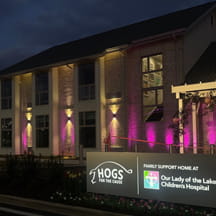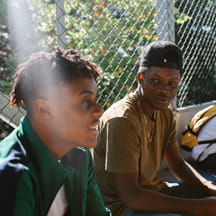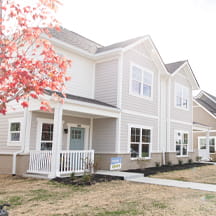A program offered by Le Bonheur Children’s Hospital in Memphis helps children with medical needs or developmental delays access early childhood education.
Many childcare centers and preschools don’t have the resources to care for kids who take specialized medications, require intermittent catheterization, or have feeding tubes, tracheostomies, or other medical needs, such as sensory and feeding disorders.
With limited options, parents often leave the workforce or rely on their own support networks for childcare. That means children miss the chance to develop social, emotional, and school readiness skills offered by preschool programs. The need for more robust inclusive early childhood programs was spelled out in a joint policy statement by the U.S. Department of Education and U.S. Department of Health and Human Services in November 2023.
Le Bonheur Children’s Inclusion Support service trains, guides, and assists early childhood educators so infants, toddlers, and preschoolers with specialized medical needs or developmental disabilities can access and maintain safe care.
Danielle Keeton, Le Bonheur’s senior director of rehab and developmental services, says children’s hospitals are uniquely qualified to bridge the gap between families and early childhood centers.
“Children's hospitals can become part of the solution because they're trusted in their communities. Hospitals also have the medical expertise to drive the program, and the kids who really need this service are typically already aligned with specialists at the children’s hospital,” Keeton says.
Increasing capacity
Le Bonheur has welcomed kids with developmental and medical needs into its on-site early childhood center from the 1990s to 2010. In 2009, the hospital sought ways to increase capacity in the community. The initial idea was to base Le Bonheur inclusion facilitators — community health workers with early childhood experience who learn to perform medical procedures — at 16 sites where they would help staff learn to care for kids with medical needs. However, this model didn’t provide a significant increase in capacity.
Le Bonheur facilitators now travel to any high-quality early childhood center in the Memphis area where families are seeking enrollment. The change gives parents increased options for preschool, and more educators receive training. The model allows Le Bonheur to serve approximately 200 children and train 400 educators annually with five facilitators and one nurse.
Training for independence
The Inclusion Support team serves as a link between the center and the family, coordinating hands-on staff training, and collaboratively planning goals for the child and the center. But the goal is for center staff to become self-sufficient instead of relying on the Inclusion Support team for daily assistance.
“We want to make sure they feel comfortable from the get-go,” says Jill Rogers, director of Le Bonheur’s early intervention program. “We don't say you have exactly two weeks to do your training and then you're good to go. It is completely individualized to the center, to the parent, to the child.”
Carey Wright, RN, nurse case manager for Inclusion Support, uses dolls to introduce catheterization, trach care, and G-tube feedings before they interact with the child. Then, Wright or a facilitator demonstrates how to perform the procedure on the child.
“We take it at their pace, understanding they're not medical and some people need extra support,” Wright says. “It's never a forceful issue. It is all voluntary,” Wright says.
Once the teacher feels they can do the procedure without assistance, Wright observes the process from start to finish. If successful, the teacher is cleared to perform the procedure independently.
“We don't break up at that point. We just don't have to be there every day, every procedure. We continue to educate the staff because babies have growth spurts, and their needs will change. We're still very involved in making sure everybody's doing what's right and what's ordered by the physicians or providers,” Wright says.
Community impact
It’s difficult to quantify the financial impact Inclusion Support has had on the hospital or the community, but access to early childhood education has allowed many parents to remain in the workforce or continue their education, Keeton says.
The program can also serve as a conduit between families and hospital-based providers. “Our facilitators can be part of the continuum of care when these kids are seen at their outpatient clinic visits,” Keeton says. “They bridge the gap between families and providers since they know first-hand what the family and child face each day.”
Melissa Smith, the program’s coordinator, says she routinely shares information about the team’s eight-stage model with other children’s hospitals looking to enter the space. The model outlines the process from the initial referral to information gathering, goal setting, strategy identification, and plan evaluation. It culminates with a summary report that includes the next steps for the child and family.
“Our model is focused on the child, but we connect with the child through all the layers that naturally support the child, such as their family, doctors, and early childhood educators. We strengthen the most important relationships for the child and family,” Smith says.
6 tips for success
- Schedule a discovery meeting with key stakeholders in the community to explore ideas and learn about specific needs. These may include representatives from the state’s early intervention program, early childhood education providers and advocacy groups, foundations and grant-making entities, and others involved in this space.
- Get to know the early childcare experts in your area and determine if any early childhood centers are doing any type of inclusion work.
- Once a model is in place, seek funding from entities that want to improve early childhood health and education outcomes. For example, a Memphis-based non-profit dedicated to promoting the education, health, and well-being of young children, funds a portion of Le Bonheur’s Inclusion Support program.
- Ask for volunteers who want to provide medical care from among the preschool staff. Some may be uncomfortable performing medical procedures.
- Train teachers in the room where the child will be as well as another staff member and member of management who can serve as floaters when the regular teachers aren’t available.
- Let the Inclusion Support team make initial contact with the childcare center and accompany parents on tours to reassure the center staff who are not familiar with the program.


